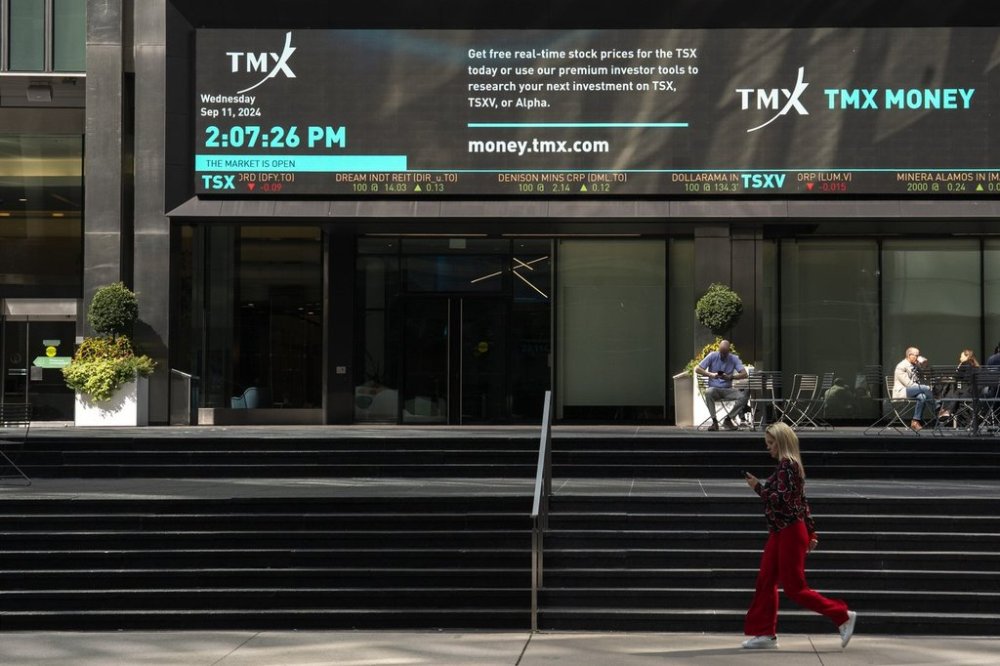S&P/TSX composite, U.S. markets finish lower as new tariffs take effect
Advertisement
Read this article for free:
or
Already have an account? Log in here »
To continue reading, please subscribe:
Monthly Digital Subscription
$0 for the first 4 weeks*
- Enjoy unlimited reading on winnipegfreepress.com
- Read the E-Edition, our digital replica newspaper
- Access News Break, our award-winning app
- Play interactive puzzles
*No charge for 4 weeks then price increases to the regular rate of $19.00 plus GST every four weeks. Offer available to new and qualified returning subscribers only. Cancel any time.
Monthly Digital Subscription
$4.75/week*
- Enjoy unlimited reading on winnipegfreepress.com
- Read the E-Edition, our digital replica newspaper
- Access News Break, our award-winning app
- Play interactive puzzles
*Billed as $19 plus GST every four weeks. Cancel any time.
To continue reading, please subscribe:
Add Free Press access to your Brandon Sun subscription for only an additional
$1 for the first 4 weeks*
*Your next subscription payment will increase by $1.00 and you will be charged $16.99 plus GST for four weeks. After four weeks, your payment will increase to $23.99 plus GST every four weeks.
Read unlimited articles for free today:
or
Already have an account? Log in here »
TORONTO – Canada’s main stock index lost ground on Friday along with global markets, as U.S. President Donald Trump imposed new tariffs on numerous countries and U.S. job numbers showed signs of softness.
Markets could be facing a period of weakness ahead, said Brianne Gardner, senior wealth manager with Velocity Investment Partners at Raymond James. She noted headlines around trade uncertainty can cause “short-term panic,” given the difficulty of anticipating Trump’s next moves.
“I think that can create a short-term sell-off in the market. (Given) how stretched things have been since the last sell-off in April, and coming off two years of really muted volatility, we wouldn’t be surprised coming into seasonal weakness of August and September to see another five to seven per cent sell-off right now, and this could be the start of it,” she said.

The S&P/TSX composite index was down 239.35 points at 27,020.43.
Meanwhile, the U.S. stock market had its worst day since May on Friday.
In New York, the Dow Jones industrial average was down 542.40 points at 43,588.58. The S&P 500 index was down 101.38 points at 6,238.01, while the Nasdaq composite was down 472.32 points at 20,650.13.
Prime Minister Mark Carney said Friday his government was disappointed that Trump followed through on his threat to increase tariffs on Canada to 35 per cent.
The White House has said the tariffs will not affect goods compliant with the Canada-U.S.-Mexico Agreement on trade, commonly known as CUSMA.
Worries on Wall Street about a weakening economy were also were heavily reinforced by the latest jobs report as just 73,000 jobs were added in the U.S. in July. That was sharply lower than economists expected. The U.S. Labor Department also reported revisions which shaved a stunning 258,000 job gains off May and June data.
“I think from an overall economy standpoint, the economic data is going to become more and more crucial. We are starting to see signs of cracks a little bit and that will really determine the pace or the direction of rate decisions,” Gardner said.
On Wednesday, both the Bank of Canada and the U.S. Federal Reserve held borrowing costs steady, in moves widely expected by economists.
“But now with the next meeting coming up — we don’t have one in August — so coming up in September there’s about a 46 per cent chance for a rate cut from the Fed … and only 19 per cent odds of a cut in September for the Bank of Canada,” she said.
“If the economic data continues to show weakness, we could see the odds of a cut increase.”
The Canadian dollar traded for 72.48 cents US compared with 72.23 cents US on Thursday.
The September crude oil contract was down US$1.93 at US$67.33 per barrel.
The December gold contract was up US$51.20 at US$3,399.80 an ounce.
— With files from The Associated Press.
This report by The Canadian Press was first published Aug.1, 2025.
Companies in this story: (TSX:GSPTSE, TSX:CADUSD)



